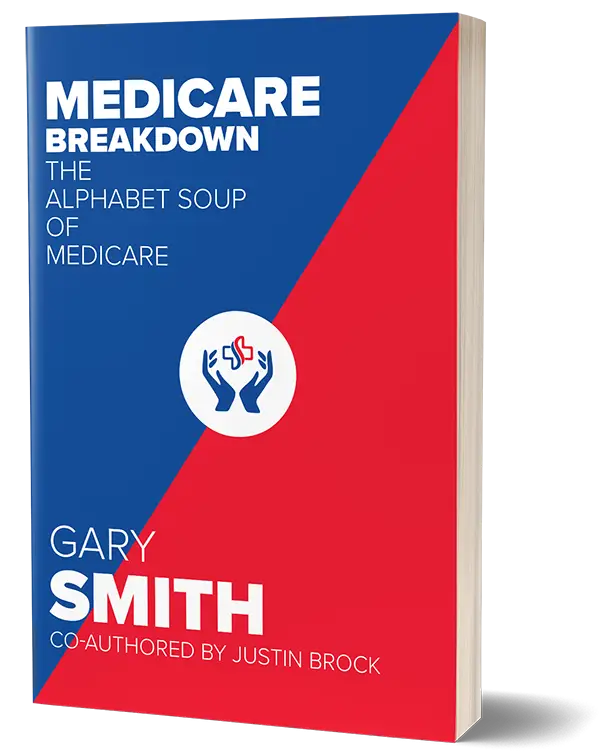Understanding Medicare Costs What You Need to Know
Get A Free Quote
We put the CARE in Medicare!
Navigating the world of Medicare can feel a bit like standing at the edge of a vast ocean—exciting but daunting. With all the options and costs associated with this vital program, it’s essential to get a grip on what you’ll be paying. Whether you’re approaching retirement or helping a family member, understanding Medicare costs can lead to better financial decisions and a smoother healthcare experience. Let’s break it down together, shall we?
The Basics: What is Medicare?
Medicare is the federal health insurance program primarily for individuals aged 65 and older. However, it also serves some younger people with disabilities or specific medical conditions. The program is divided into different parts, each covering different aspects of healthcare. Knowing how these parts work together—and the costs associated with them—is crucial.
Medicare Parts You Should Know
Keep in mind that Part A is often premium-free for most beneficiaries because they’ve paid into the system during their working years. Parts B, C, and D, however, come with their own costs, so let’s get into that.
Breaking Down the Costs: What to Expect
Breaking Down the Costs: What to Expect
The cost of Medicare premiums can fluctuate based on your income and which parts of Medicare you enroll in.
- Part A: Generally free for those who qualify.
- Part B: In 2025, the standard premium is about $185 per month, but higher earners might pay more—up to $628.90 if your income exceeds certain thresholds.
- Part C: Costs vary widely—some plans may have low premiums, but it’s essential to check what’s covered.
- Part D: Like Medicare Advantage, premiums depend on the plan you choose, averaging around $40 per month.
So, how do you figure out what you’ll end up paying? Look at your needs—what services do you actually use? If you rarely visit the doctor, you might opt for a plan with lower premiums and higher copays. But if you’re frequently in and out of the hospital, spending a bit more on premiums for lower out-of-pocket costs could save you money in the long run.

What About Deductibles?
Every year, Medicare sets a deductible amount that must be met before coverage kicks in. Here’s how they break down:
- Part A Deductible: Typically around $1,676 for each benefit period (as of 2025). This can add up quickly if you find yourself hospitalized multiple times within a year.
- Part B Deductible: A set $257 per year, which needs to be paid before Medicare starts sharing the costs of your approved medical services.
For anyone with a Medicare Advantage or Part D plan, these deductibles can differ significantly. Be sure to read the fine print to understand what you’ll owe before any benefits are provided.
Copayments and Coinsurance: The Hidden Costs
Okay, here’s where it can get a bit tricky. Copayments and coinsurance are the costs you’ll face after meeting your deductible.
- Copayments: A fixed amount you pay for a specific service, like $20 for a doctor visit. This can make budgeting easier since you know exactly what you're paying each time.
- Coinsurance: This is a percentage of the total service cost that you’ll pay after your deductible is met. For instance, with Part B, after your deductible is reached, you typically pay 20% of the Medicare-approved amount for services.
These costs can sneak up on you, especially if you frequently require medical services. It’s helpful to have a rough idea of what you'll be paying out-of-pocket based on your personal health needs.
Out-of-Pocket Costs
What’s Your Limit?
Medicare can cover a lot, but it doesn’t cover everything—you'll want to be aware of your out-of-pocket costs. These are costs that you have to pay yourself without reimbursement, such as deductibles and coinsurance.
Understanding Maximum Out-of-Pocket Limits
Medicare Advantage plans have a safeguard in place called the out-of-pocket maximum. This is the most you’ll pay in a given year for covered services. In 2025, the maximum out-of-pocket cost is around $9,350 for in-network services.
Traditional Medicare, however, doesn’t have this feature. So, if you go down that route, you might find yourself paying significant amounts if your healthcare needs are extensive. This is why exploring Medigap insurance could be a smart move.

Strategies to Save
Get More for Your Buck
Let’s face it—medical costs can pile up quickly, especially as we age. Fortunately, there are several savvy ways to manage your expenses while ensuring you’re still covered.
Consider a Medigap Policy
Medigap, or Medicare Supplement insurance, helps cover costs that Medicare doesn’t. This can include:
- Copayments
- Coinsurance
- Deductibles
These plans can significantly ease the financial burden of unexpected healthcare needs. Since they vary in coverage and cost, it’s wise to shop around and assess which plan aligns with your health and financial goals.
Save on Prescription Drugs
Prescription costs can add up, but there are ways to combat this:
- Choose Generic: Generic drugs are typically just as effective but way cheaper.
- Review Part D Plans: Not all plans cover the same medications. Look for a plan that includes your specific medications on its formulary to save more.
- Consult with a Pharmacist: They can often suggest cost-effective alternatives.
Additionally, keep an eye on the donut hole phenomenon. This is a coverage gap in Medicare prescription drug plans where you might initially pay more out of pocket before your coverage kicks back in. Understanding how this works can help you plan your purchases better.
Embrace Preventive Services
Did you know that Medicare covers a range of preventive services at no additional cost? That’s right! This includes annual wellness visits, certain cancer screenings, and vaccinations. Utilizing these free services can help catch potential health issues early and save you money down the line.
Special Considerations for Unique Populations
Medicare is designed with flexibility, but certain individuals may have special considerations that could affect costs.
Low-Income Subsidies: Extra Help
For those struggling financially, programs like the Low-Income Subsidy (LIS) can help significantly. If you qualify, you might receive assistance with your Part D costs, helping alleviate the burden of prescriptions. It’s worth checking eligibility to ensure you’re not missing out on any financial relief!
Dual Eligibility: Medicare and Medicaid
Many individuals qualify for both Medicare and Medicaid, often referred to as dual eligibility. For these beneficiaries, Medicaid can cover many of the costs that Medicare doesn’t, including premiums and out-of-pocket expenses. This can result in very low or even zero healthcare costs, allowing recipients to focus on their wellbeing instead of their wallets.

The Future of Medicare Costs
What Lies Ahead?
As we’ve seen, Medicare costs can vary widely based on numerous factors. But what about the future? Changes in legislation can have real implications for beneficiaries.
Legislative Changes on the Horizon
With ongoing discussions in Congress concerning healthcare reform, it’s essential to stay informed. Proposals to reduce drug prices, expand benefits, or modify eligibility requirements could change what Medicare costs look like in the coming years.
Ongoing Trends in Healthcare Costs
Healthcare costs have continuously trended upwards, and anticipate that to continue. As technology evolves and as healthcare needs become more complex, Medicare will likely adapt, which may lead to both increases in premiums and potential expansions of coverage benefits.
Take Charge of Your Medicare Journey
Understanding Medicare costs might feel overwhelming, but breaking it down helps you take charge of your healthcare. From premiums to deductibles to copayments, being informed allows you to make better decisions tailored to your personal needs.
Don’t hesitate to explore your options annually, as plans can change and new benefits may emerge. Have questions or need personalized guidance? Consider reaching out to a trusted advisor or Medicare representative. Being pro-active not only helps you save money but also ensures peace of mind as you navigate your healthcare journey.
Remember, knowledge is power, especially when it comes to something as vital as your health. Stay informed, and you’ll be prepared for whatever challenges come your way!



